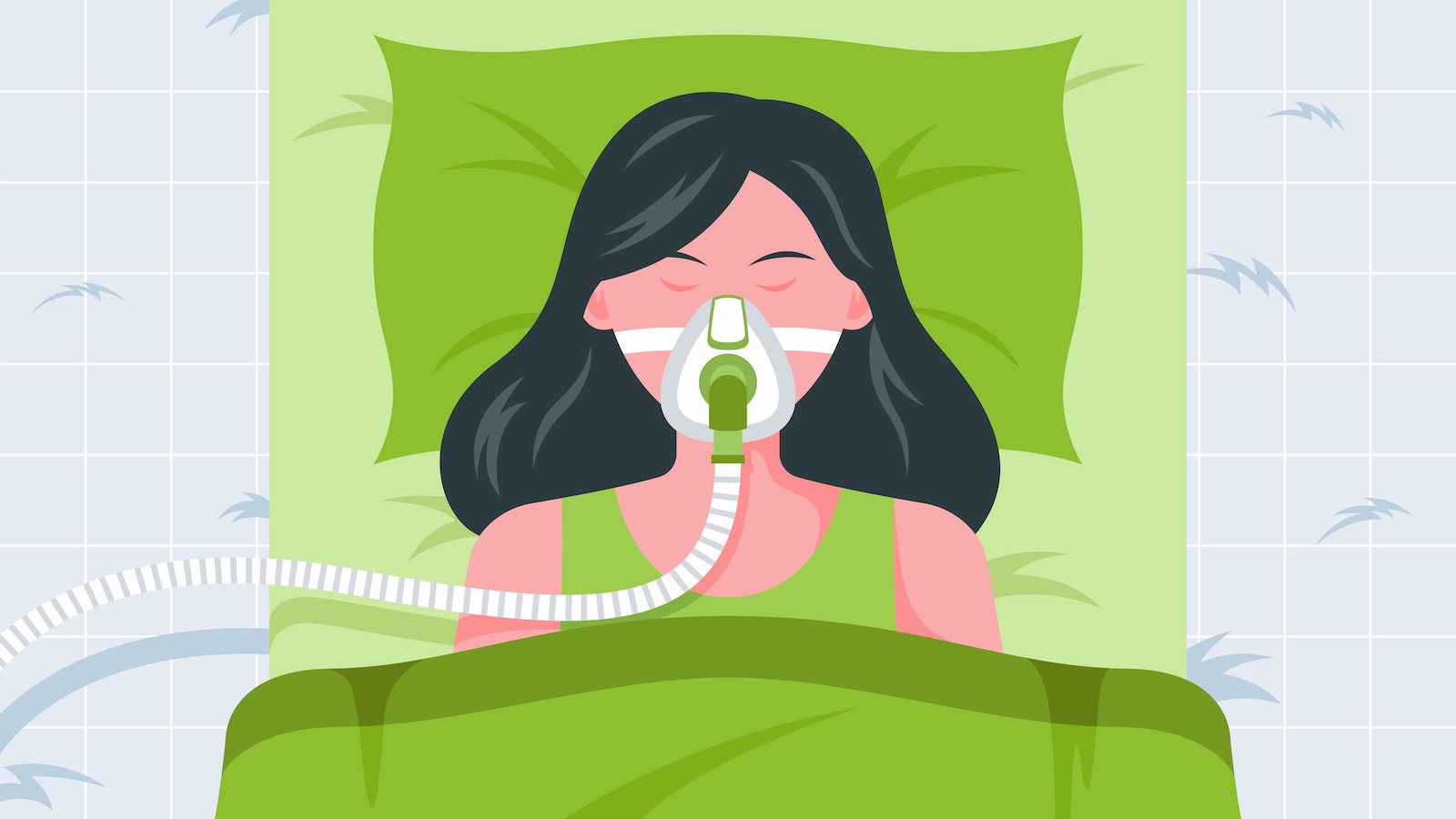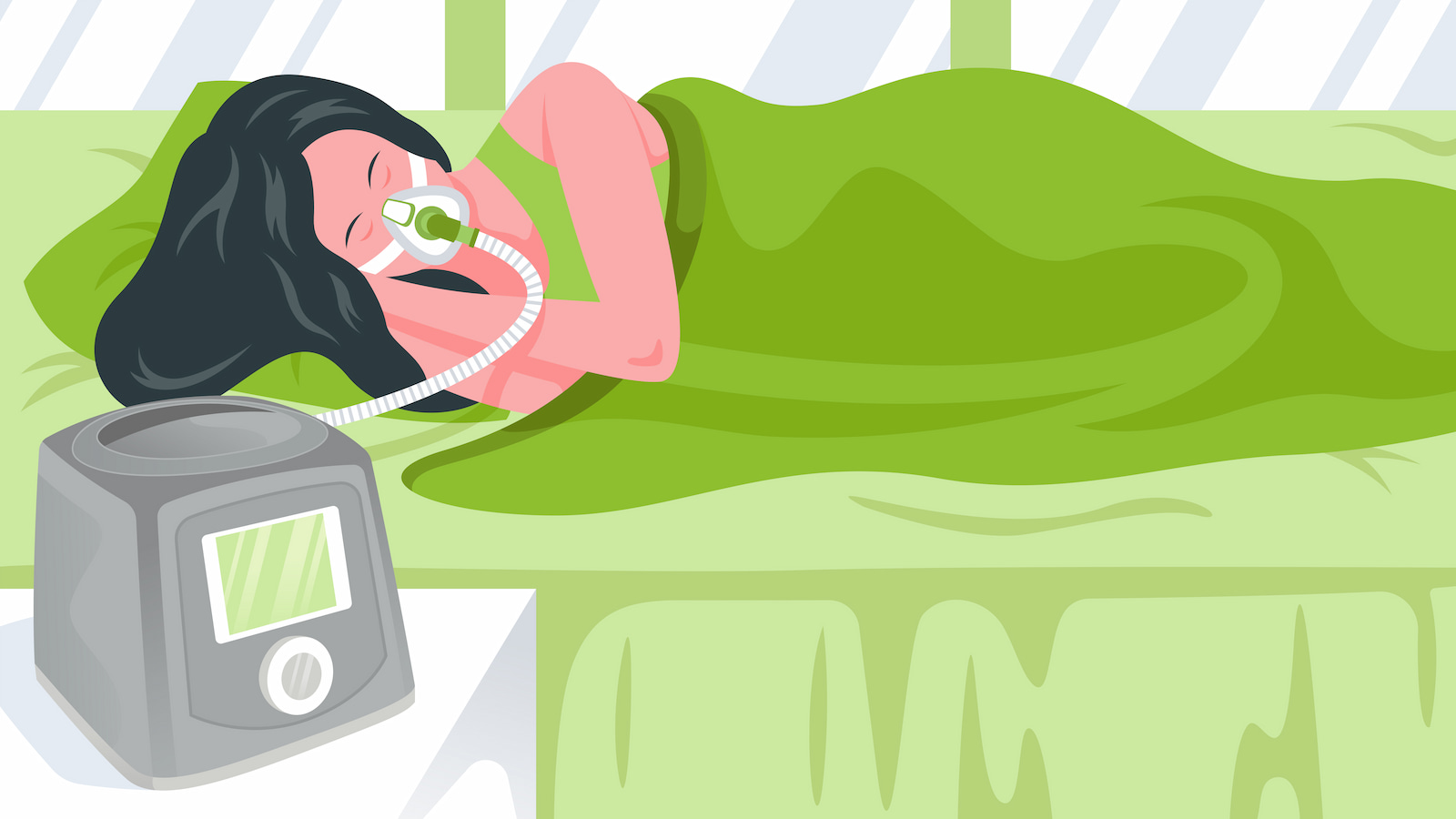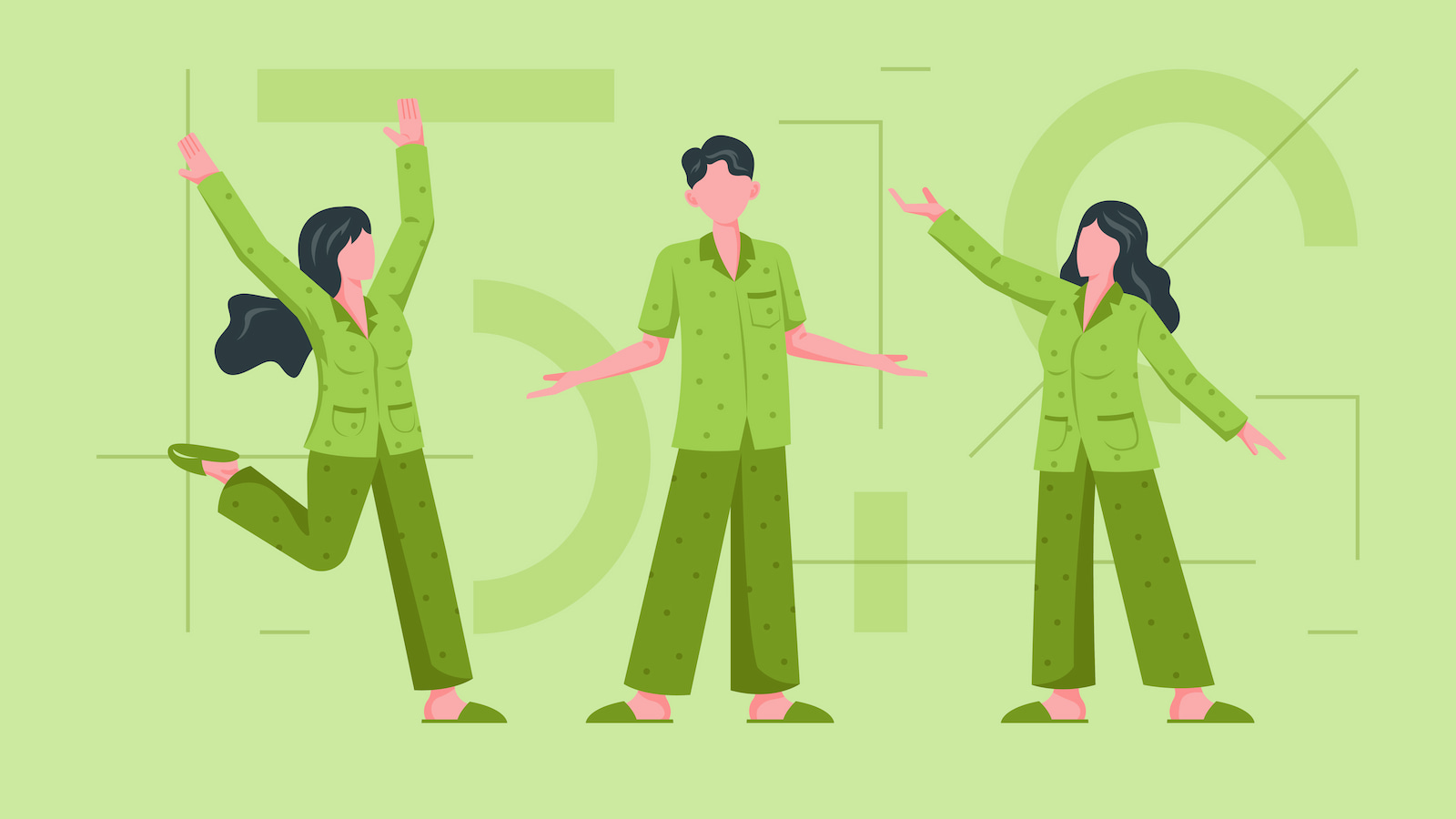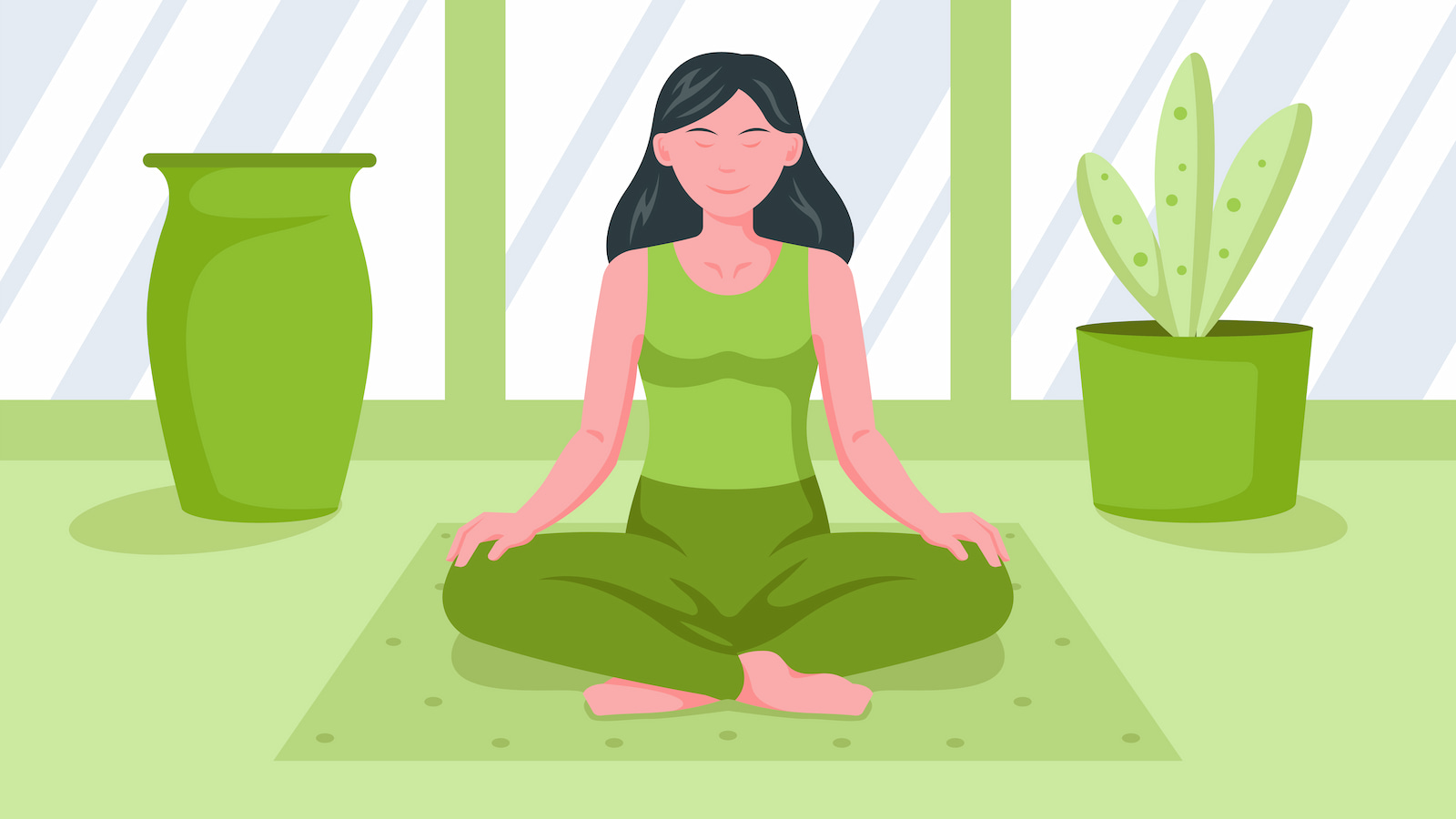Five Considerations to Encourage CPAP Machine Usage and Optimize Comfort

Consistent, proper usage of your CPAP machine greatly maximizes the benefits of PAP therapy in reducing sleep apnea symptoms and improving sleep quality and quality of life.
Getting started with CPAP therapy might seem daunting with the various machine options available, multiple mask designs and accessories, and a seemingly endless list of acronyms and abbreviations to learn to keep everything straight.
Fortunately, regardless of the machine type recommended for you, best practices and recommendations are typically similar.
Whether you’re an experienced user looking for tips to help improve your experience or someone new to CPAP machine usage who is looking to understand the essentials and improve your chances of success, the five areas we cover in this guide offer simple ways to ensure optimal comfort and safe operation of your CPAP, APAP, or BiPAP machine.
1. Get Your Mask Fit Just Right
Next to the diagnosis and setting your machine type and pressure, choosing the proper CPAP mask and ensuring it fits properly is one of the key elements in improving your sleep apnea symptoms.
But it’s also vital in providing a comfortable PAP therapy experience and avoiding common complications.
Masks typically fall into one of three designs:
- Full coverage masks or full face masks that cover both the mouse and nose
- Nose masks or nasal masks that cover just the nose
- Mouth masks that sit just below the nose

Each design offers unique benefits.
You should consult with your sleep specialist or CPAP Supplier for advice on the best option for your particular needs.
From face shape and sleeping position to sleep apnea causes and severity, everything about your situation will play a role in deciding the optimal mask.
It’s also important to consider that even within similar designs, there are often different sizes available.
If you cannot achieve a solid seal using the adjustment straps on your mask, this may indicate a mask size issue. It could also indicate that the mask isn’t compatible with your face and you should try a different style.
The following steps should help to outline proper mask fitment and usage for nearly any style of mask.
However, as there are numerous designs on the market, if a step doesn’t make sense to you, you might need to consult with your CPAP Supplier or sleep specialist for clarification.
Never modify your masks or accessories to make them work in a way not intended by the manufacturer. These changes can result in increased risk to yourself and your equipment.
CPAP Mask Best Practices
While CPAP masks are simple to use, make sure that you follow all recommended steps to connect your CPAP mask to your machine and secure it on your face.
Doing so will maximize the benefits of your sleep apnea treatments and ensure long-lasting performance from your CPAP masks, machine, and accessories.
- If your mask features removable straps, the first step in donning your mask is to attach the straps to the mask body securely. Failing to do so could result in the straps coming loose during tightening or unsnapping while you sleep.
- Hold the mask to your face being sure to align it properly with your facial features.
- Pull the straps around or over your head to secure the mask to your face.
Once the mask is in place, activate your CPAP machine and check for a solid seal with your skin.
Any air leaks will not only reduce the effectiveness of your treatment but could cause discomfort and irritation.
If your mask makes any odd noises when pressure is applied, or you notice that you have dry eyes after CPAP use, these could indicate air leaks.
If you have facial hair, keeping it well-groomed or shaved in areas where the mask contacts your face will be critical to ensuring a good seal.
Making a routine of washing your face before donning your mask can also help to encourage a good seal, reduce the chances of skin irritation, and prevent damage to your mask caused by excess skin oils, skincare product residue, or residual cosmetic products.
If you’re concerned about checking the quality of your mask’s seal, some CPAP machines include a built-in seal check feature to assist with this.
Otherwise, it’s mostly a matter of observation and testing for a few nights.
It might take you a few tries to find a mask that offers the perfect mix of comfort and performance for your needs.
If you are having trouble achieving a good fit, never modify your mask.
Instead, consult your CPAP Supplier for additional options and recommendations.
2. Set Yourself Up for CPAP Success
While CPAP machines have come a long way in recent years, they’re still an extra element of your sleep routine that you’ll need to remember to use.
Understandably, sleeping with new hoses, masks, and noises in your sleep environment might take some adjustment on your part.
However, how you set up your CPAP machine near where you sleep can play a huge role in this as well.

The following tips will help ensure safe CPAP usage and minimize the machine’s impact on your sleeping space, in turn encouraging smooth, consistent, and accessible operation for machines of all types.
Planning where to place your CPAP machine is something you should not take lightly.
This will impact everything from machine maintenance and accessibility to the risk of damage if you toss and turn and get tangled in your hoses and cords.
In general, you want to start with a place large enough and stable enough to store your CPAP machine, such as a large headboard or bedside table.
Never balance your CPAP machine on something prone to falling over or on a thin edge.
If you should roll over in the night, get out of bed and forget to remove your mask, or get a surprise visit from your pets, your machine could take a very costly tumble.
This also brings us to our next recommendation. Always place your CPAP machine within easy reach of your typical sleeping location.
Travel units and portable CPAP machines are available for use outside the home, but for your everyday unit, setting it somewhere you won’t need to move it around much will minimize the chance of accidents and ensure access whenever you need it.
Your hose should reach your face with a minimal amount of slack or stretching.
This ensures you won’t pull the machine off in your sleep or get caught up in the hoses.
The same criteria apply to electrical cords. Be sure to consider electrical outlet placement as running cords throughout the bedroom could create tripping hazards.
Finally, make sure you can access all parts of the CPAP machine easily wherever you place it.
While being able to use it while you sleep is critical, there are a number of maintenance tasks you’ll need to keep up.
If you have to extract your machine from a tight corner or high shelf every time you need to clean it, replace filters, or refill the humidifier, you’re less likely to do these tasks as often as you should.
This often comes at the cost of treatment quality and safety and could lead to damaged equipment.
3. Take Your Time (And Set Some Aside Too)
As briefly mentioned in the location considerations, using a CPAP machine means adding some new routines to your typical bedtime schedule.
Especially in the beginning, you should allow extra time to calmly go through the various steps required to connect your mask and hoses, secure the straps, ensure your machine is ready for the night, and confirm your mask fit.

Even if you’re used to using your CPAP machine, rushing through steps is one of the easiest ways to overlook something.
Even minor things can have a significant impact on your sleep experience, so taking a little extra time upfront is always worth it.
By making your CPAP set up a part of your nightly routine, just like you might with washing your face or reading a book, you build habits that will encourage long-term success.
It’s common to experience some discomfort at first.
The sensation of positive air pressure, the noise of the machine, and wearing a mask to bed will take time to get used to.
However, you shouldn’t change things every day in search of the perfect setup.
If you make any changes to your CPAP arrangements, you should also provide some time to assess the outcomes created.
Can’t find a comfortable position or achieve a solid mask seal after a few nights and minor adjustments to your sleep position or CPAP machine placement?
It may be time to consult your primary care provider or sleep specialist for additional accommodations.
Alternative CPAP mask designs, CPAP pillows, CPAP machine accessories, and other solutions can help.
But they’re not always one-size-fits-all solutions. As such, asking for input from a medical professional is always recommended.
4. Use All the Tools Available to You
While your CPAP machine will have the greatest impact on your sleep apnea symptoms and is an essential element of safe, effective treatment, there are other external factors and ways you can accentuate or expand upon your PAP therapy to potentially improve comfort and results.
Difficulty relaxing is one of the biggest complaints many people have when first starting CPAP treatment.
Even if you can manage to fall asleep while tense, you’re likely to wake up sore or experience poor sleep quality.
If your machine offers a ramp function, using it can help to ease you into the positive airflow sensation.
Give it a try and see if it helps you find a relaxed, comfortable sleep position and fall asleep faster.

You can also utilize relaxation and anxiety management techniques such as stretching, meditation, breathing exercises, and creating an environment conducive to sleeping and relaxation.
If you’re new to CPAP machine use and having trouble getting comfortable with the basics of mask usage, consider wearing your mask casually and breathing through it while watching TV, reading, or performing other calm tasks for short periods.
Once you’ve found a comfort level with mask wearing, consider using your machine while awake for short periods.
Each night, attempt to wear your CPAP mask and you will adjust over time. Even starting with as little as 15 minutes will quickly increase to 30 minutes, an hour, and eventually the whole night.
This can help drastically reduce the anxiety and claustrophobic feelings sometimes reported first experiencing the sensations created by positive airway pressure.
5. Monitor Your Experience and Report Potential Issues
While most of this guide centers on overcoming or preventing discomfort or side effects, there are some things you should keep an eye out for and be mindful of when using a CPAP machine to treat your sleep apnea symptoms.
PAP therapies are proven to help reduce sleep apnea symptoms, provide a better night’s sleep, and restore quality of life.
However, complications can reduce the effectiveness of treatment. They might also encourage you to form bad habits or completely stop your treatments.
More importantly, some complications might indicate more than simple discomforts and point at something bigger which needs addressing.

If any of the following occur, consult a medical specialist.
While they might not always signify a hazardous situation or critical concern, they’re typically situations you can address by adjusting your therapy methods or implementing some simple accessories alongside your therapy plan.
- Bloating or extra gas upon waking
- Chest or stomach discomfort
- Dry mouth
- Nasal congestion
- Nosebleeds
- Respiratory infections
- Runny nose
- Skin irritation or sores
- Unintentional mask removal while sleeping
Most importantly, never attempt to modify pressure settings on your CPAP machine to address complications yourself.
Whether you’re using an APAP, BiPAP, or CPAP machine, your machine should arrive precisely calibrated, with pressures set to your ideal settings using titration and a sleep study.
Making changes to these settings without medical guidance can quickly eliminate any benefits gained or even amplify the very complications you’re attempting to address.
Key Takeaways
- Mask fit is one of the most important aspects of CPAP use that you can control.
- Mask design, mask sizing, and strap adjustments provide multiple options for optimizing fit and creating a strong seal.
- Always secure your CPAP mask straps before putting on your mask to prevent injury or accidental mask removal during sleep.
- Placing your CPAP machine in a stable location near electrical outlets and your sleeping area will help to reduce the risk of pulling your machine down or getting tangled in hoses or cords.
- Always be sure to consider maintenance tasks, such as filter replacement and humidifier refilling, when choosing a location.
- Take your time and make your CPAP setup and maintenance a dedicated part of your bedtime routine to avoid mistakes and establish good habits.
- The ramp function on some CPAP machines can help to reduce the intensity of sensations created when positive airway pressure starts.
- Relaxation techniques, such as stretching, meditation, and breathing exercises, can also help adjust to CPAP treatment easier and encourage falling to sleep quickly.
- While it may take some time to adapt to using your CPAP machine, be sure to note any complications and report them to your primary care provider, CPAP Supplier, or sleep specialist. Doing so will help rule out serious issues and guide adjustments to your therapy experience.
- Never attempt to adjust your machine’s pressure settings. These are set using titration and sleep studies to your exact needs.
CPAP Supply is your leader in customer satisfaction among online CPAP supply stores in Canada. Whether you’re looking for your first CPAP machine, alternatives or upgrades to an existing machine, or masks, hoses, and other accessories to keep your treatment experience comfortable and effective, our comprehensive selection and friendly team are ready to help! Browse our collection of CPAP machines, CPAP masks and mask parts, and CPAP accessories, or contact us with any questions you might have!
References
- Mayo Clinic: CPAP Machines: Tips for Avoiding 10 Common Problems
- Sleep Foundation: How to Use a CPAP Machine for Better Sleep
- The American Association of Sleep Technologists (AAST): Top 10 Most Common CPAP Mask Problems and Discomfort (& How to Solve Them)
- Healthgrades: Sleep Apnea Mask Mistakes to Avoid
